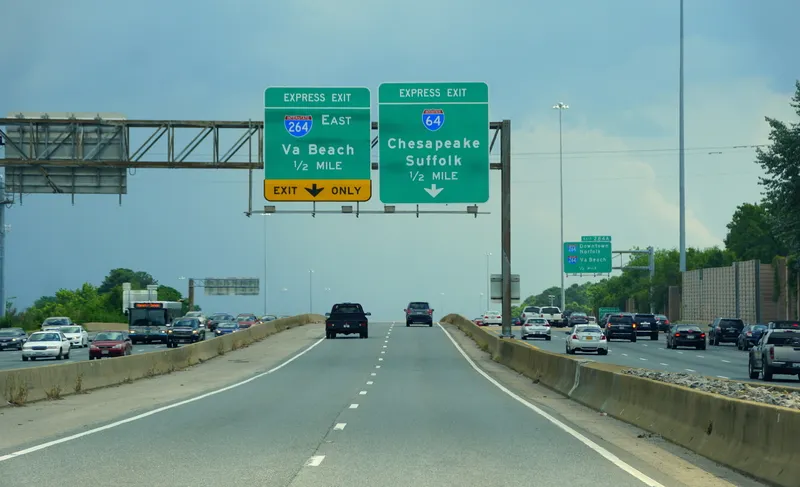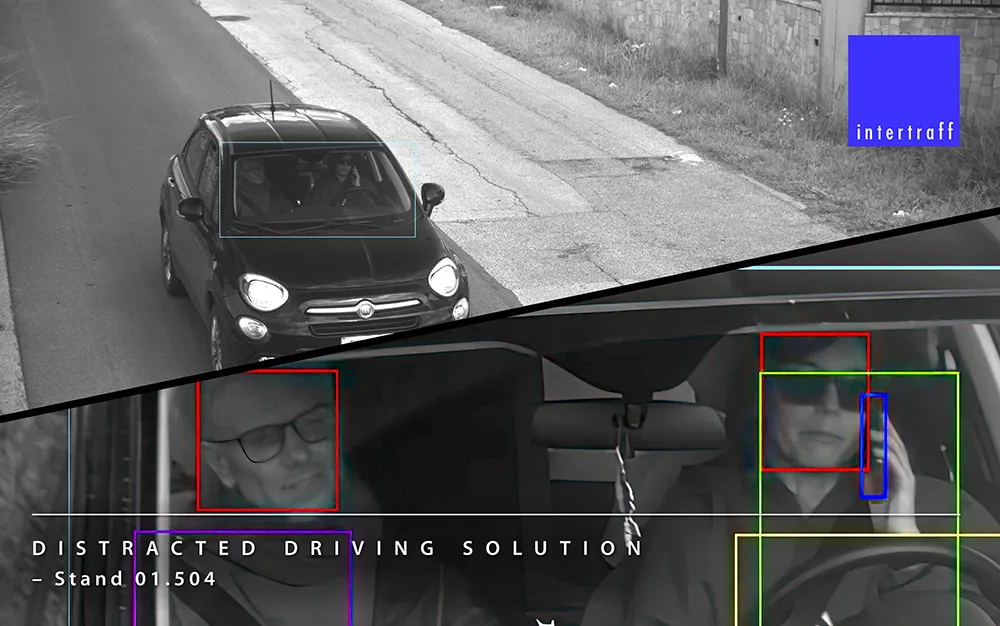Counting the number of people in a vehicle has always been a manual task, but now Xerox has developed a real-time system to automate the process. Xerox has introduced an automated system that determines the number of passengers in a vehicle, enabling authorities to detect non-qualifying drivers using the High Occupancy Vehicle (HOV) and High Occupancy Toll (HOT) lanes. Traditionally HOV/HOT enforcement has entailed local police visually confirming each vehicle has the required number of occupants and chasin
May 27, 2014
Read time: 4 mins

Counting the number of people in a vehicle has always been a manual task, but now Xerox has developed a real-time system to automate the process.
4186 Xerox has introduced an automated system that determines the number of passengers in a vehicle, enabling authorities to detect non-qualifying drivers using the High Occupancy Vehicle (HOV) and High Occupancy Toll (HOT) lanes. Traditionally HOV/HOT enforcement has entailed local police visually confirming each vehicle has the required number of occupants and chasing offenders to issue a ticket. “Today, officers must park on the shoulder of a highway and quickly merge into traffic to chase down the violator, putting both the officer and the public at risk,” says Mark Cantelli, vice president and chief technology officer of Xerox’s Government and Transportation Sector.
Consequently, enforcement of HOV and HOT lanes has been sporadic, tempting some drivers in non-qualifying vehicles to use the restricted lanes and risk detection. Such behaviour degrades the effectiveness of HOV/HOT lanes making them less advantageous for drivers with a genuine case to use the restricted roadway.
To counter these problems Xerox has developed a Vehicle Passenger Detection System (VPDS) which automatically counts the number of passengers in vehicles with better than 95% accuracy.
According to the company, seeing inside a vehicle poses a variety of problems ranging from line of sight into vehicles of different heights, window tinting and vehicle geometries, to the more traditional weather, lighting conditions and tracking a vehicle in a lane difficulties. It says it has developed algorithms which can detect a windshield regardless of the vehicle’s shape and is able to accurately process the images of vehicles travelling at any speed from stop/start to 160km/h (100mph).
The camera itself can be mounted on existing infrastructure alongside or above the lane. Having captured an image, video analytics and geometric algorithms are used to distinguish between empty seats and those occupied by humans. According to Xerox, pets, luggage, groceries or blankets will not be misidentified as ‘occupants’.
Additional testing for ‘inflatable passengers’ is underway but Xerox is confident that the combination of VPDS and a manual image review means few, if any, dummies will have an accurate enough representations of human faces to fool the system. Cantelli is keen to stress, however: “We do not employ facial recognition.”
Having determined the number of occupants, if that doesn’t match the setting on the HOT lane transponder, the system will send a real-time violation alert to the enforcement agency. “This detection system automates the process and improves safety through the use of high-quality images and the generation of an evidence package,” says Cantelli, adding: “any driver thinking of moving into a HOV lane without the required number of passengers needs to think again.”
In two separate trials the system achieved 95.1% and 98.9% accuracy rates and to ensure privacy it does not connect the HOV transponder IDs with location data. The data regarding offenders is encrypted and stored locally while data on non-violators is not saved.
As the requirements for prosecuting violations differ between authorities, if required possible offenders can be reported in real time to allow the enforcement agency to make a visual confirmation.
Simultaneously an evidence file is created which can include time-stamped images showing the interior of the vehicle to illustrate the number of people onboard although the faces will be blanked out. Other images will show the vehicle and the registration plate while the date, location and direction of travel will automatically be included as will a contemporary record of the over-lane display.
The system is still under trial and Xerox expects authorities adopting the technology to follow a similar procedure as with photo enforcement of speed and red light violations with pictures of the offence posted on a restricted website for the ‘defendant’ to view.
“It’s a case of sitting down with the authority and discussing what they need,’ says Cantelli.
Other benefits of the system include allowing agencies to determine how many people are travelling and not just how many vehicles; which can inform roadway management and traffic planning decisions.
While the system is available for purchase Xerox is currently concentrating on setting up pilots schemes to allow agencies to become comfortable with the technology. “It takes people a while to get comfortable and write the policies around how they use the technology,” says Cantelli.
Consequently, enforcement of HOV and HOT lanes has been sporadic, tempting some drivers in non-qualifying vehicles to use the restricted lanes and risk detection. Such behaviour degrades the effectiveness of HOV/HOT lanes making them less advantageous for drivers with a genuine case to use the restricted roadway.
To counter these problems Xerox has developed a Vehicle Passenger Detection System (VPDS) which automatically counts the number of passengers in vehicles with better than 95% accuracy.
According to the company, seeing inside a vehicle poses a variety of problems ranging from line of sight into vehicles of different heights, window tinting and vehicle geometries, to the more traditional weather, lighting conditions and tracking a vehicle in a lane difficulties. It says it has developed algorithms which can detect a windshield regardless of the vehicle’s shape and is able to accurately process the images of vehicles travelling at any speed from stop/start to 160km/h (100mph).
The camera itself can be mounted on existing infrastructure alongside or above the lane. Having captured an image, video analytics and geometric algorithms are used to distinguish between empty seats and those occupied by humans. According to Xerox, pets, luggage, groceries or blankets will not be misidentified as ‘occupants’.
Additional testing for ‘inflatable passengers’ is underway but Xerox is confident that the combination of VPDS and a manual image review means few, if any, dummies will have an accurate enough representations of human faces to fool the system. Cantelli is keen to stress, however: “We do not employ facial recognition.”
Having determined the number of occupants, if that doesn’t match the setting on the HOT lane transponder, the system will send a real-time violation alert to the enforcement agency. “This detection system automates the process and improves safety through the use of high-quality images and the generation of an evidence package,” says Cantelli, adding: “any driver thinking of moving into a HOV lane without the required number of passengers needs to think again.”
In two separate trials the system achieved 95.1% and 98.9% accuracy rates and to ensure privacy it does not connect the HOV transponder IDs with location data. The data regarding offenders is encrypted and stored locally while data on non-violators is not saved.
As the requirements for prosecuting violations differ between authorities, if required possible offenders can be reported in real time to allow the enforcement agency to make a visual confirmation.
Simultaneously an evidence file is created which can include time-stamped images showing the interior of the vehicle to illustrate the number of people onboard although the faces will be blanked out. Other images will show the vehicle and the registration plate while the date, location and direction of travel will automatically be included as will a contemporary record of the over-lane display.
The system is still under trial and Xerox expects authorities adopting the technology to follow a similar procedure as with photo enforcement of speed and red light violations with pictures of the offence posted on a restricted website for the ‘defendant’ to view.
“It’s a case of sitting down with the authority and discussing what they need,’ says Cantelli.
Other benefits of the system include allowing agencies to determine how many people are travelling and not just how many vehicles; which can inform roadway management and traffic planning decisions.
While the system is available for purchase Xerox is currently concentrating on setting up pilots schemes to allow agencies to become comfortable with the technology. “It takes people a while to get comfortable and write the policies around how they use the technology,” says Cantelli.










